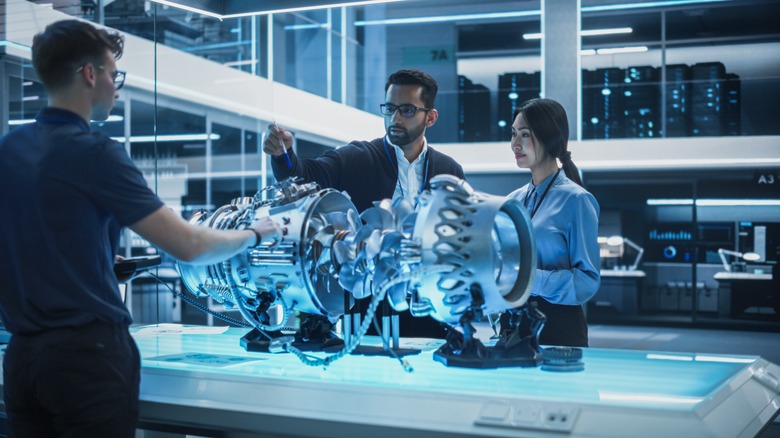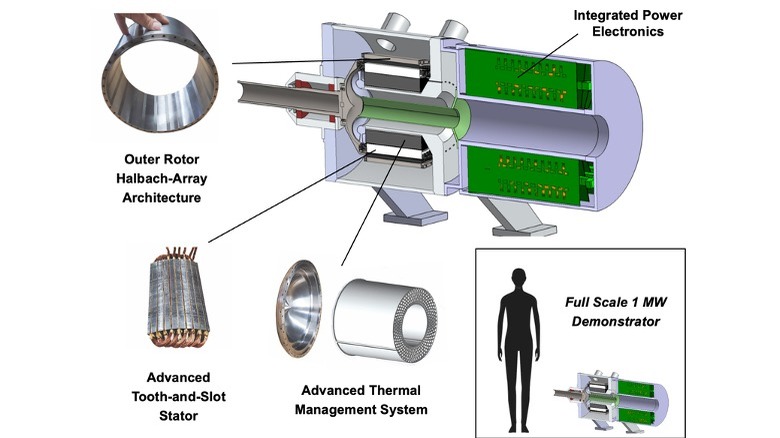MIT's MegaWatt Motor Could Change The Future Air Travel
In early June 2023, MIT News reported testing of a breakthrough propulsion technology by researchers at the school that could have a big impact on air travel. The drive for the electrification of aerial vessels is a monumental deal for travelers and those who rely on air transportation. This makes MIT's research a potentially groundbreaking success.
Research suggests that humans are continuing to pump harmful emissions into the atmosphere at increasing rates, even as competing sources sound the alarm over a dire need to reduce this collective carbon footprint. Air travel is one area in which existential change must come into play: It's estimated that by 2050, one-quarter of the "carbon budget" could be consumed by air travel alone.
The engineering team at MIT, led by Zoltan Spakovszky, aims to assemble a complete motor and test the unit this fall. The motor itself is a complex machine that utilizes a fast-switching circuit board to induce the requisite magnetic field to produce both rotation and torque.
MIT researchers are developing a larger power producer in a compact frame
Existing projects designed to rethink the way we achieve lift and keep airplanes in the sky have focused almost exclusively on small vessels. From airplanes to electrified VTOL craft, small hops from point A to point B have stood as a valuable proving ground for the concept of flight supported by renewable energies.
Larger motors and increased power output are needed to achieve the kind of lift necessary to power commercial or large cargo flights. As a result, the team had to reimagine what can be achieved in terms of weight-saving design. For context, the battery pack used to power the motor in an electric car can add up to around 25% of the total vehicle weight (sometimes as much as 2,000 pounds), according to EVBox. In contrast, the MIT team's design offers power in a minuscule package: The engine and its components each weigh less than the average adult.
"No matter what we use as an energy carrier—batteries, hydrogen, ammonia, or sustainable aviation fuel—independent of all that, megawatt-class motors will be a key enabler for green aviation," the project leader Zoltan Spakovszky said of the research. The combination of weight-saving design and powerful output places MIT's team as a serious leader and innovator in this space.
Successful adoption could spell a major victory in the climate change battle
The initial thinking on this type of motor is that it could run in tandem with existing turbofan engines. The ability to cruise on the power of an electric or other renewable-powered motors would dramatically reduce the carbon footprint of the aviation industry and humans more broadly. This remains an impressively positive outcome, even if aircraft retain the need to support traditional engines to create liftoff and ascent in the short term. A hybrid system is far superior to the existing fossil fuel landscape and a successful transition would notch a major win for the planet.
Unlike many other clean energy projects focused on air travel, the MegaWatt motor aims to reimagine the propulsion systems of large-scale vessels. Hydrogen fuel cell projects like the one recently announced by Alaska Airlines and ZeroAvia so far have sought to further smaller vessels and shorter transportation needs. These are valuable additions, considering the massive volume of carbon emissions output by regional short-haul flights and cargo logistics. But adding more powerful motors to the reservoir of available technology will augment air travel in virtually all of its diverse sectors.


